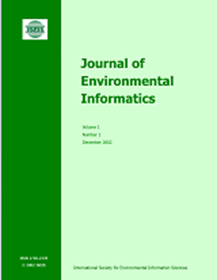云南元江草原生态系统林冠物候变化及总初级生产力评价
IF 5.4
1区 环境科学与生态学
Q1 ENVIRONMENTAL SCIENCES
引用次数: 0
摘要
植被物候是反映环境变化的重要指标,与森林生态系统生产力变化密切相关。本研究旨在分析来自数字图像的物候变化模式,以解释生态系统生产力。2014年、2015年和2016年,利用数码相机的塔式图像分析了热带稀树草原的季节性物候发展。绿色过剩指数(GEI)最能反映热带稀树草原生态系统的物候过渡日期(PTDs),对研究热带稀树草原生态系统的总初级生产(GPP)具有重要意义。绿化强度(Sgreen)、绿化过剩指数(GEI)和植被对比指数(VCI)的月变化与全年GPP呈显著相关。此外,颜色指数的年度格局具有显著的相关性(p <0.05),但不具有季节性。气温(air T)与土壤温度(soil T)呈极显著强相关(p <0.001)与生长季开始(SGS)相关,导致2014年和2016年绿化提前,生长季开始时间提前。生长季长较短对产量有较大影响。数码相机图像的颜色指数不仅提供了森林冠层的物候格局,而且通过显示对环境因子的响应揭示了森林生态系统的生产力。我们的研究结果表明,每天连续的数码相机图像可能对生态学家有用,可以作为长期物候模型的未来预测工具。本文章由计算机程序翻译,如有差异,请以英文原文为准。
Assessing Canopy Phenological Variations and Gross Primary Productivity in A Savanna Ecosystem in Yuanjiang, Yunnan Province of Southwest China
Vegetation phenology is an important indicator of environmental change and strongly connected to forest ecosystem productivity change. This study aimed to analyse the pattern of phenological variations derived from digital imagery for the interpretation of ecosystem productivity. For 2014, 2015 and 2016, the seasonal phenological development of savanna was analysed by using towerbased imagery from a digital camera. The green excess index (GEI) was the best at representing the phenological transition dates (PTDs) and useful for investigating the gross primary production (GPP) in the savanna ecosystem. There was a significant correlation between the monthly pattern of the strength of green (Sgreen), green excess index (GEI) and vegetation contrast index (VCI) and GPP throughout the year. Additionally, the annual pattern of colour indices had significant relationship (p < 0.05) with GPP but this was not seasonal. The air temperature (air T) and soil temperature (soil T) were strongly significantly correlated (p < 0.001) with the start of growing season (SGS) and caused the advance in green-up and the timing of the start of the growing season in 2014 and 2016. The short growing season length (GSL) had an impact on the productivity. The colour indices from the digital camera images not only provided the phenological pattern of a forest canopy but also revealed the forest ecosystem productivity by showing the response to environmental factors. Our results indicate that daily continuous digital camera images might be useful for ecologists to use as a tool for future prediction of the long-term phenological modelling.
求助全文
通过发布文献求助,成功后即可免费获取论文全文。
去求助
来源期刊

Journal of Environmental Informatics
ENVIRONMENTAL SCIENCES-
CiteScore
12.40
自引率
2.90%
发文量
7
审稿时长
24 months
期刊介绍:
Journal of Environmental Informatics (JEI) is an international, peer-reviewed, and interdisciplinary publication designed to foster research innovation and discovery on basic science and information technology for addressing various environmental problems. The journal aims to motivate and enhance the integration of science and technology to help develop sustainable solutions that are consensus-oriented, risk-informed, scientifically-based and cost-effective. JEI serves researchers, educators and practitioners who are interested in theoretical and/or applied aspects of environmental science, regardless of disciplinary boundaries. The topics addressed by the journal include:
- Planning of energy, environmental and ecological management systems
- Simulation, optimization and Environmental decision support
- Environmental geomatics - GIS, RS and other spatial information technologies
- Informatics for environmental chemistry and biochemistry
- Environmental applications of functional materials
- Environmental phenomena at atomic, molecular and macromolecular scales
- Modeling of chemical, biological and environmental processes
- Modeling of biotechnological systems for enhanced pollution mitigation
- Computer graphics and visualization for environmental decision support
- Artificial intelligence and expert systems for environmental applications
- Environmental statistics and risk analysis
- Climate modeling, downscaling, impact assessment, and adaptation planning
- Other areas of environmental systems science and information technology.
 求助内容:
求助内容: 应助结果提醒方式:
应助结果提醒方式:


